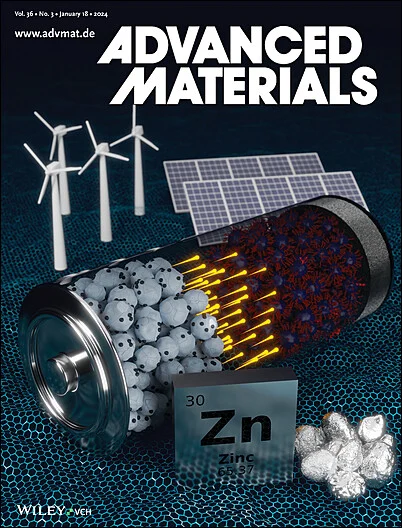Ultra‐Low Power and Robust Bi2SeO5 Films Optoelectronic Memristors for Bio‐Visual Perception Computing Systems
IF 26.8
1区 材料科学
Q1 CHEMISTRY, MULTIDISCIPLINARY
引用次数: 0
Abstract
Optoelectronic memristors have broad application prospects in the fields of artificial intelligence (AI) and the internet of things (IOT) because they can dynamically process a large number of spatiotemporal optoelectronic signals in complex environments. However, it is still a challenge to develop optoelectronic memristors with low power consumption and fast response while maintaining the efficiency and robustness of the system. Here, a photoelectric memristor based on Bi用于生物视觉感知计算系统的超低功耗和鲁棒Bi2SeO5薄膜光电记忆电阻器
光电忆阻器能够在复杂环境下动态处理大量时空光电信号,在人工智能(AI)和物联网(IOT)领域具有广阔的应用前景。然而,如何在保持系统效率和鲁棒性的同时,开发出低功耗、快速响应的光电忆阻器仍然是一个挑战。本文提出了一种基于Bi2SeO5薄膜的光电忆阻器。该器件具有超快的电阻开关速度(≈9.5 ns)和超低的突触事件功耗(≈1.36 fJ)。在4000个周期内稳定的瞬时光开/关响应行为和非常快的光响应速度(≈28 ns)也证实了该器件作为光电探测器的优异适用性。更重要的是,设计了一个仿生视觉感知与计算系统。该系统不仅利用器件作为光电探测器实现了速度超过160 kb s−1的无线通信,而且利用器件在偏置电压下的突触效应在硬件层面实现了光储层计算(RC)网络。数字识别的准确率达到90.5%,为开发广泛应用和性能增强的仿生视觉系统提供了一种超快速、低功耗的方法。
本文章由计算机程序翻译,如有差异,请以英文原文为准。
求助全文
约1分钟内获得全文
求助全文
来源期刊

Advanced Materials
工程技术-材料科学:综合
CiteScore
43.00
自引率
4.10%
发文量
2182
审稿时长
2 months
期刊介绍:
Advanced Materials, one of the world's most prestigious journals and the foundation of the Advanced portfolio, is the home of choice for best-in-class materials science for more than 30 years. Following this fast-growing and interdisciplinary field, we are considering and publishing the most important discoveries on any and all materials from materials scientists, chemists, physicists, engineers as well as health and life scientists and bringing you the latest results and trends in modern materials-related research every week.
 求助内容:
求助内容: 应助结果提醒方式:
应助结果提醒方式:


